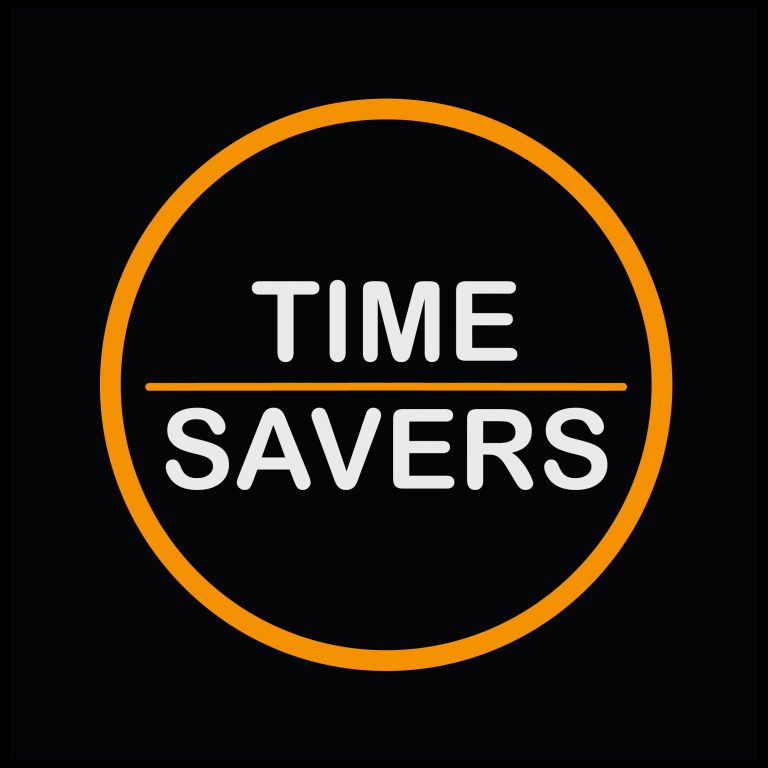Meet Our Heroes
MAUV Apparel entered the activewear scene with one bold promise: the V-sculpt design. While giants like Alo, Astoria, and Oner Active dominated the landscape with millions in ad spend and cult followings, MAUV brought something different to the table. Their signature V-waist technology wasn’t just another trendy cut. It was engineered to accentuate curves and create that coveted hourglass silhouette without sacrificing comfort or performance.
The brand’s founder wasn’t naive about the challenge ahead. They knew the activewear market was crowded, competitive, and expensive. But they also knew their product worked. Early feedback from influencer gifting campaigns and small organic posts showed real excitement. Women loved how the leggings felt, how they looked, and how they performed during workouts and everyday wear.
MAUV’s target customer wasn’t hard to pin down. She’s Regina: a 24-year-old corporate professional living in Los Angeles, making around $80,000 a year. She juggles her desk job with a fitness routine that includes gym sessions and Pilates classes. Her nails and hair are always done, she has a Sephora card she uses religiously, and her Instagram feed is a curated mix of wellness, fashion, and aspirational lifestyle content. She listens to both American pop and reggaeton on Spotify, drives a newer sedan, and rents a sleek $2,000 apartment in the heart of the city.
Regina was out there. Millions of her existed across California, Texas, and Florida. MAUV just needed to find her.
Their Goals
MAUV came to Digital Time Savers with a clear but ambitious objective: build awareness. They weren’t chasing massive sales numbers out of the gate. They understood that in a market dominated by established players, the first step was making people know they existed, and more importantly, making them care.
The brand wanted to introduce their V-sculpt technology to the right audience, create buzz around the product, and begin building a community of loyal customers who would eventually become repeat buyers and brand advocates. They were ready to test, learn, and iterate. They wanted to move fast, but smart.
With a starting monthly ad budget of just $1,000, they needed every dollar to work hard. This wasn’t a war chest. It was a proving ground.
The Challenge
MAUV faced a perfect storm of obstacles that would have made most brands hesitate before hitting “publish” on their first ad.
First, the competition. The activewear space isn’t just crowded. It’s a battlefield. Brands like Alo Yoga and Lululemon command eight-figure ad budgets and near-religious customer loyalty. Newer challengers like Astoria and Oner Active were already spending aggressively on Meta and Google, saturating the same audience MAUV was targeting. Standing out meant more than just showing up. It meant being different, visually striking, and immediately compelling.
Second, the budget. At $1,000 per month, MAUV was operating on a shoestring compared to competitors spending tens of thousands per day. Every creative had to hit. Every audience had to be precise. There was no room for waste, no cushion for prolonged testing, and no margin for error. This meant the strategy had to be lean, agile, and ruthlessly efficient.
Third, the brand was unproven in the paid ads space. MAUV had done some light gifting with influencers and run a handful of minimal ads in the past, but nothing structured or scaled. They didn’t have a robust creative library, no proven winning ads, and no historical performance data to guide decisions. They were starting from scratch in an ecosystem that rewards speed, testing, and iteration.
Fourth, awareness doesn’t pay the bills immediately. While MAUV’s goal was brand awareness, the reality of eCommerce is unforgiving. Ads cost money. Awareness is great, but it doesn’t generate cash flow on day one. The strategy had to walk a tightrope: drive awareness while still nudging people toward purchase, building momentum without burning budget on vanity metrics.
And finally, the product had to speak for itself. In activewear, fit is everything. Women don’t just want leggings that look good in photos. They want them to feel incredible, perform during workouts, and hold up after dozens of washes. MAUV’s V-sculpt design was their differentiator, but communicating that through a screen, in a five-second scroll, was no small task.
Our Process
Phase One: Audience Architecture and Creative Foundation
We started where every great campaign starts: with clarity. Before spending a single dollar, we needed to understand who Regina really was beyond the persona. We dug into Meta’s Audience Insights, analyzed competitor followings, and cross-referenced demographic and psychographic data from similar activewear brands.
We identified three core audience segments to test:
- Fitness Enthusiasts: Women aged 22–34 who follow Pilates studios, boutique gyms, wellness influencers, and activewear brands. These were women already in the market, actively searching for their next pair of leggings.
- Fashion-Forward Professionals: Women in the same age range who engage with fashion content, follow influencers in the lifestyle and beauty space, and shop at brands like Revolve, Princess Polly, and Zara. These were women who wanted activewear that doubled as streetwear.
- Aspirational Wellness Seekers: Women interested in self-care, body positivity, glow-ups, and transformation content. These were women who saw activewear as part of a larger lifestyle upgrade.
We geo-targeted urban centers in California, Texas, and Florida, where Regina was most likely to live, work, and spend.
On the creative side, we knew static images wouldn’t cut it. Activewear is experiential. It has to be seen in motion. We worked with MAUV to produce short-form video content showcasing the V-sculpt technology in action: squats, lunges, walking, stretching. We captured real women (not just models) wearing the product in gyms, coffee shops, and city streets. The message was clear: these leggings work everywhere, for everyone.
We also leaned into user-generated content (UGC) style ads. Authentic, unpolished clips that felt like a friend recommending a product, not a brand selling one. In a space saturated with high-gloss influencer content, this raw approach stood out.
Phase Two: Launch and Learn
We launched on Meta first, specifically Facebook and Instagram, knowing that’s where Regina spent most of her time. We split the $1,000 budget strategically: 60% toward awareness campaigns using video views and reach objectives, and 40% toward traffic and engagement to start building signals for future retargeting.
The first two weeks were about observation, not optimization. We let the algorithms gather data while we monitored which creatives resonated, which audiences engaged, and which placements performed. Early signals showed that Instagram Stories and Reels were driving the highest engagement, particularly among the Fitness Enthusiast and Fashion-Forward Professional segments.
We also noticed something interesting: video ads showcasing the V-sculpt design from behind (emphasizing the waist-cinching effect) dramatically outperformed front-facing or side-angle shots. Women wanted to see the result, the silhouette, the transformation. We doubled down on that angle immediately.
Phase Three: Expansion and Amplification
By week three, we had enough data to start scaling intelligently. We shifted budget toward the top-performing audience (Fitness Enthusiasts) and introduced Lookalike Audiences based on page engagement and website visitors. This allowed us to find more Reginas without manually hunting for them.
We also activated Google Ads, focusing on YouTube pre-roll ads targeting women watching fitness, wellness, and lifestyle content. YouTube gave us longer storytelling windows. We used 15-second ads that showcased the product in action, with captions highlighting the V-sculpt design and a strong call-to-action to visit the site.
On Google Search, we targeted branded competitor keywords and high-intent phrases like “best activewear for hourglass figure,” “comfortable gym leggings,” and “stylish workout clothes.” The goal wasn’t conversion at this stage. It was visibility. We wanted MAUV’s name to appear every time someone searched for alternatives to Alo or Astoria.
We kept creative production rolling. Every week, we tested new angles: testimonial-style videos, before-and-after fit comparisons, lifestyle montages set to trending music. We weren’t guessing. We were iterating based on real performance data.
Phase Four: Retargeting and Conversion Optimization
By the end of the first month, we had built a warm audience of over 15,000 people who had engaged with MAUV’s content, visited the website, or watched videos. These weren’t cold leads. They were interested, curious, and one nudge away from purchasing.
We launched retargeting campaigns on Meta with dynamic product ads, showcasing the exact items people had viewed on the site. We also introduced limited-time offers and social proof messaging: “Loved by hundreds of women,” “Selling out fast,” “Join the MAUV movement.”
On YouTube, we retargeted video viewers with shorter 6-second bumper ads reinforcing the brand and driving urgency.
Results
Within the first 90 days, MAUV Apparel went from a brand with minimal paid advertising presence to a recognizable name in the activewear space, particularly among young, fashion-conscious, fitness-focused women in urban markets.
Awareness metrics exceeded expectations:
- Over 450,000 impressions across Meta and Google platforms
- 85,000+ video views with an average watch time of 8.2 seconds
- 12,500+ website visits from paid traffic alone
Engagement skyrocketed:
- 6,800+ post engagements (likes, comments, shares, saves)
- Click-through rate (CTR) of 2.1% on Meta ads, significantly above the 1.2% industry average for apparel
- Cost per click (CPC) averaged $0.42, keeping acquisition costs lean
But beyond the numbers, MAUV accomplished something harder to measure: positioning. They weren’t just another activewear brand. They were the brand with the V-sculpt design. The brand that understood what women wanted: to look incredible and feel unstoppable.
The campaign proved that even in a saturated market, with a modest budget and a fresh brand, strategic targeting, authentic creative, and relentless iteration can carve out space and drive real growth. MAUV didn’t just launch. They arrived.






